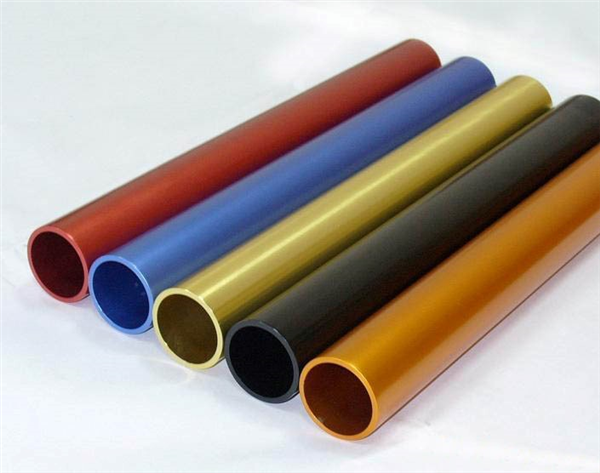©Copyright ©2020 LINKEDALU METAL GROUP CO.,LTD.Technical support:Guangzhou Jumi Network
Aluminum profilecoloring defects generally included such types: light color, color difference, coloring difficulty, white pot, exposed white, floating and asymmetry ofcoloring and so on. It is very important in the aluminum profile trade that each batch of products maintains the same color, confirmed within the range of the deviation under the requirements of consumers. Therefore, the aluminum profile manufacturers pay more attention in study of the electrolytic coloring surface treatment of the aluminum profile.

A. The causes and treatments of light color and color difference
1. Uneven thickness of oxide film due to the uneven temperature and concentration of anodic oxidation solution.
Treatment: stir the solution in the compressed air.
2. Uneven temperature or concentration of coloring solution.
Treatment: increase the times of stirring.
3. The coloring speed is excessively fast. The first and last coloring part is the bottom of the workpiece, so the bottom is prone to deep coloring.
Treatment: dilute the coloring solution and extend the coloring solution time appropriately.
4. Poor conductivity caused by the loose hangers
Treatment: pay attention to fix the hangers
5. The coloring solution is too thin
Treatment: add coloring solutions to increase the concentration.
6. The coloring solution temperature is too low.
Treatment: heat the coloring solution to 60 ℃ below
7. The coloring solution is improperly dissolved or the insoluble coloring solution is floating, which may cause uneven coloring.
Treatment: improve the coloring solution dissolution.
B. The cause and treatment of coloring difficulty.
1. Anodic oxide film thickness is insufficient.
Treatment: check whether the anodizing process is standardized, and whether the temperature, voltage, conductivity and other factors are stable. If it is abnormal, adjust the specification; if not, appropriately extend the oxidation time to ensure the film thickness to meet the standards.
2. The coloring solution PH value is too high.
Treatment: add the acetic acid to adjust the PH value to the standard value.
3. The workpiece stays too long in the tank after the oxidation.
Treatment: before coloring, place the workpiece in the anodic oxidation tank or the nitric acid tank to appropriate activation. But, please coloring in time as possible as you can.
4. The coloring solution is improper
Treatment: choose a new appropriate one.
5. The coloring solution has been decomposed or mildew
Treatment: replace the coloring solution.
6. The oxidation temperature is too low, resulting in dense membrane. Treatment: increase the oxidation temperature appropriately.
7. Poor conductivity – caused by the poor contact of the anode copper rod or cathode lead plate possibly.
Treatment: clean anode copper rod and cathode lead plate often to ensure good conductivity.
C. The causes and treatment of white spots and exposed white
1. Incomplete washing
Treatment: strengthen the washing process.
2. The washing water is so dirty to contaminate the film.
Treatment: replace to ensure the quality of washing.
3. The oxide film is contaminated by soot, acid, alkali fog in the air.
Treatment: strengthen the washing, timely coloring, and timely transfer.
4. The oxide film is contaminated by the oil and perspiration.
Treatment: avoid touching the appearance surface of the workpiece.
5. The coloring solution contains dissolved impurities that contaminated by oil to damage to normal coloring.
Treatment: replace filter or the coloring solution and clean tank regularly.
6. The residual acid exists in the workpiece seam and deep hole
Treatment: strengthen the washing.
7. The coloring solution is contaminated, resulting in pot corrosion of the workpiece surface
Treatment: replaced coloring solutions, and avoid the introduction of impurities in the process of operation.
D. The causes and treatment of color floating and asymmetry
1. The pH value of the coloring solution is relatively low
Treatment: add the dilute ammonia water to adjust the value.
2. Incomplete washing.
Treatment: strengthen washing.
3. The coloring solution is not fully dissolved
Treatment: strengthen the dissolution to achieve complete dissolution.
4. The temperature of coloring solution is too high.
Treatment: lower temperature.
5. The oxide film pores are small -- the low oxidation temperature prevents the coating dissolved by sulfuric acid.
Treatment: appropriately increase the oxidation temperature.
6. The workpiece is placed quickly in the coloring solution while the coloring time is too short.
Treatment: dilute the solution, reduce the coloring temperature, and extent the coloring time.
7. The sealing temperature is too low,
Treatment: heat the sealing temperature.
8. PH value of sealing liquid is too low
Treatment: adjust it with dilute ammonia
9. The coloring surface is easy to wipe out. The main reason is the rough coating due to high oxidation temperature.
Treatment: control the oxidation temperature within the specification range.
The corresponding measures for the oxidation color defects are useful to control the quality of coloring aluminum profile, so the aluminum profile manufacturers can serve the customer better.
contact us


LINKEDALU METAL GROUP CO.,LTD.
We provide customers with quality products and provide high-quality services.
